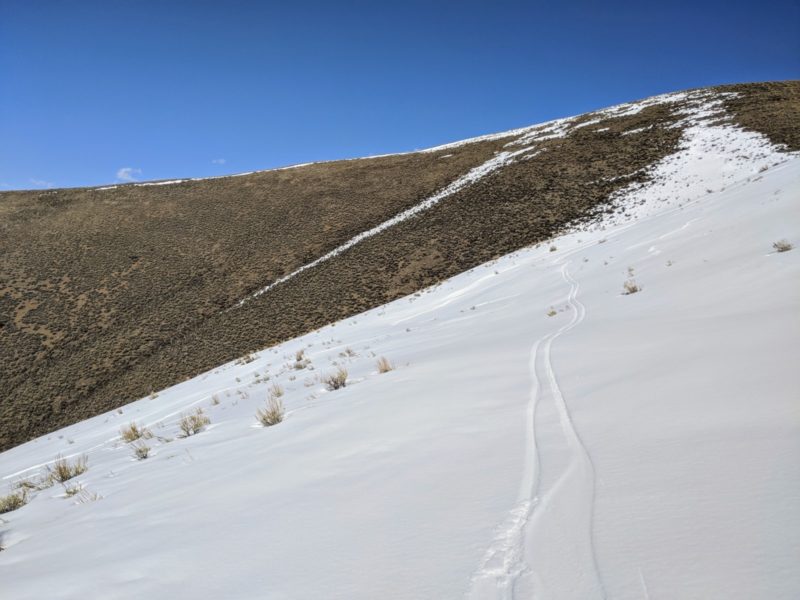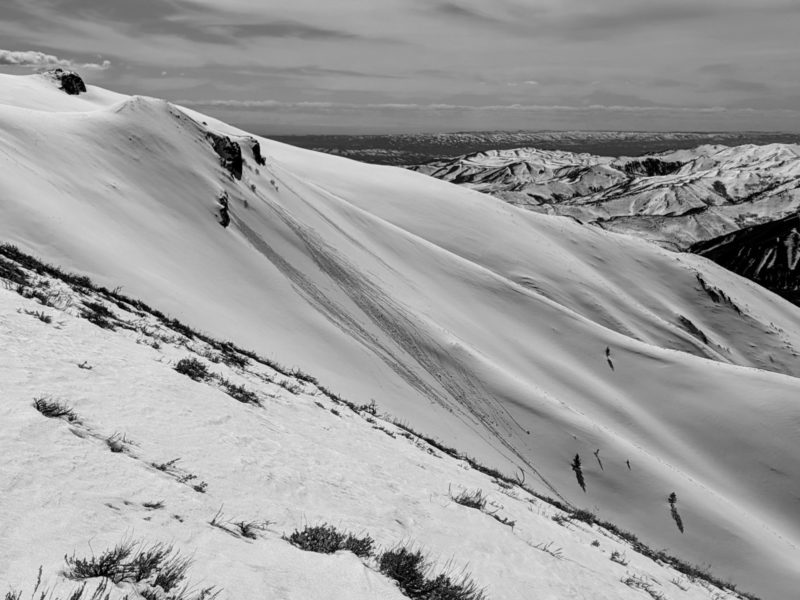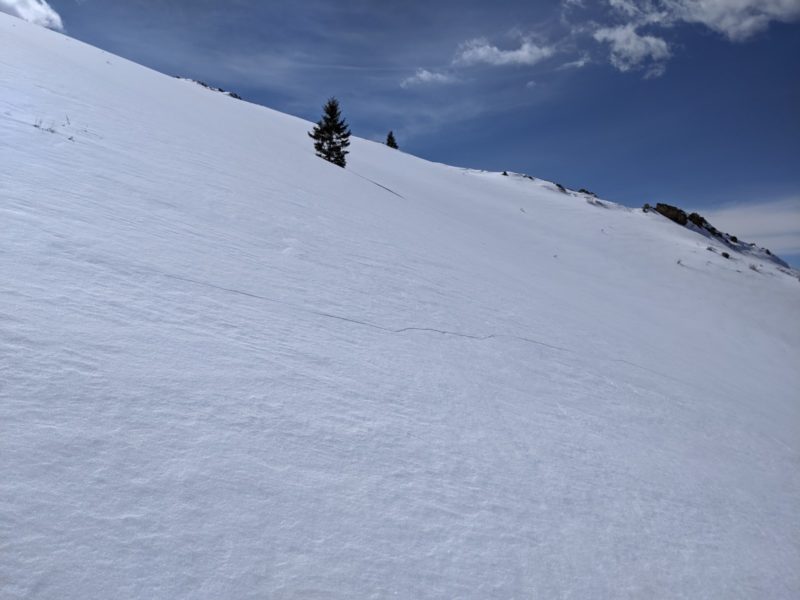Observation Details
Observation Date:
March 22, 2020Submitted:
March 22, 2020Zone or Region:
Soldier and Wood River Valley MtnsActivity:
Skiing/SnowboardingLocation:
Patterson RidgeSigns of Unstable Snow
Did you see shooting cracks?
Yes, WidespreadDid you experience collapsing or whumpfing?
Yes, WidespreadObservations
I skied east, north, and west aspects. The east aspect slope provided great skiing in the late morning. I would not have wanted to ski it after the snowpack became isothermic. I skied old but good powder on a north aspect slope until about 7,000' when the surface turned to a melt-freeze crust. I would not be comfortable skiing north aspects steeper than 30 degrees based on the forecast and collapsing I found. The west aspect slope provided great afternoon corn skiing, but there was also a funky avalanche problem that spooked me from skiing anything steeper than 30 degrees.
Media



Advanced Observations
Observed Avalanche Problem #1:
Persistent SlabComments:
This was forecasted to be found on north aspects and that's exactly where I found it. A quick pit showed about 50cm of facets at the base of the snowpack. A crust was on top of that, then the recent storm snow, and melt/freeze crust on top. On my skin up, I caused a large, rumbly collapse that felt deep. I could hear the collapse roll across the slope adjacent to me. 200' feet above me I found cracks. I was on mid-20 degree terrain and did not see any slides.Observed Avalanche Problem #2:
Wet SlabComments:
I'm not sure what to call this problem. I triggered widespread collapses on a west aspect slope at 7,000'. The largest collapse caused large fractures visible to the bottom of the drainage 800' below. The slope was 28-30 degrees. Despite the collapses, no avalanches were triggered.This problem caught me off guard. The snowpack was frozen solid in the morning. I hiked up it in tennis shoes. It was no more than 2-3 feet deep and sagebrush were poking through the snow. I skied the same slope at 3 PM and found a very different snowpack. The fact that cracks were sent hundreds of feet downhill in what felt like a spring snowpack was surprising. I was glad the slope was not steeper and that I was not on steeper terrain. I have no idea what avalanche problem (i.e. persistent slab, melt-freeze crust, near-surface facets) or combination of avalanche problems caused the instability, but I left the hills feeling less confident about stability in the Wood River Valley.
